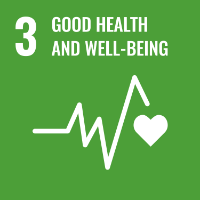
COMBI trial hopes to reverse the cycle of low birth weight in Zimbabwe
COMBI trial hopes to reverse the cycle of low birth weight in Zimbabwe
At a glance
- Babies who are born too early or too small have a higher risk of dying or long-term problems with growth and development, particularly in low-income countries.
- Professor Andrew Prendergast is leading a study in Zimbabwe to intervene even before infants are born – treating pregnant mothers with a course of antibiotics to keep them healthy during pregnancy and to help their newborn infants survive and thrive.
- Antibiotics did not increase birth weight, but did reduce the risk of babies being born preterm. Effects among women living with HIV appeared even greater, with substantial reductions in preterm births.
- Intervening when women are pregnant to prevent infections may reduce the risk of preterm delivery, particularly if women have HIV infection.
Problems with obesity treatments
Around one quarter of infants around the world are born early or too small, with preterm birth now the leading cause of mortality in children under five. Children who are born too soon or too small have a higher risk of dying, and long-term effects on future prospects for learning, growth, development and even earning potential. Mothers stunted as children often give birth to children who face the same issues, with the risks being higher in women living with HIV.
Professor Prendergast and his colleagues at the Zvitambo Institute for Maternal and Child Health Research in Zimbabwe completed a clinical trial in Jan 2024, Cotrimoxazole for Mothers to Improve Birthweight in Infants (COMBI), which aims to intervene well before babies are even born.
Cotrimoxazole, a daily antibiotic with anti-inflammatory effects which can prevent a range of infections, shows promise. It led to a 40% reduction in preterm births in the COMBI trial, with even great benefits suggested in women with HIV.

Research
Across three antenatal clinics in the Shurugwi district of Zimbabwe, 1,000 women, at varying stages of pregnancy, determined by ultrasound, took part in the trial when they booked for antenatal care. To understand the types of infections and the impact of cotrimoxazole, blood samples, stool samples, vaginal swabs, and dental samples were taken throughout pregnancy. The antibiotic was given double-blind, meaning neither women nor researchers were aware of who received the active drug or the placebo, taken as two tablets daily. Women were also provided with all treatments required throughout their pregnancy, including daily folic acid and any antibiotics needed to treat infections.

A promising, low-cost intervention
Cotrimoxazole is widely available and shows promise as a future treatment, with the number of preterm births in women receiving cotrimoxazole being 40% lower than the placebo group. Cotrimoxazole could be a key component of a future package of interventions for pregnant women, due to it being low cost, widely used and well-tolerated. People are also familiar with it, given that it’s already often used to treat HIV. However, further research is needed, with expanded trials across multiple other countries.
Longer pregnancies and larger babies
Cotrimoxazole is a particularly promising intervention for pregnant women with HIV, who were even more responsive than women without HIV. They not only experienced longer pregnancies (about one week on average) with a reduction in preterm births, but also had bigger babies. Women with HIV are at a higher risk of having an adverse birth outcome, meaning their need for interventions is even greater. As cotrimoxazole is frequently taken by people living with HIV anyway, to prevent infections, it could be restarted when they become pregnant, to reduce the risk of adverse birth outcomes.
Exploring long-term benefits for children
This study has paved the way for a second wave of research to help improve pregnancy outcomes. Researchers now want to understand any long-term benefits for the babies involved in the study. By re-enrolling 800 children from the trial, from ages two to two and a half years old, they hope to understand whether being healthier at birth has long-term impact for child growth and development.
Key takeaways
-
Preventive antibiotic treatment presents great promise for improving birth outcomes, particularly in women with HIV.
-
This research now needs to be replicated in other settings, with multi-country trials designed to reduce preterm births, considering factors such as malaria and HIV prevalence.
-
Generational cycles of poor health outcomes can limit public health interventions’ effectiveness: health policy and guidelines can address this with effective research and evidence-based practice.
Sustainable Development Goals
 The COMBI trial in Zimbabwe supports SDG 3 by improving birth outcomes, particularly for women with HIV. Queen Mary's study found that cotrimoxazole reduced preterm births by 40%, contributing to healthier pregnancies and reduced infant mortality. This low-cost intervention has the potential to improve maternal and child health in low-income countries, offering scalable solutions for global health challenges.
The COMBI trial in Zimbabwe supports SDG 3 by improving birth outcomes, particularly for women with HIV. Queen Mary's study found that cotrimoxazole reduced preterm births by 40%, contributing to healthier pregnancies and reduced infant mortality. This low-cost intervention has the potential to improve maternal and child health in low-income countries, offering scalable solutions for global health challenges.
